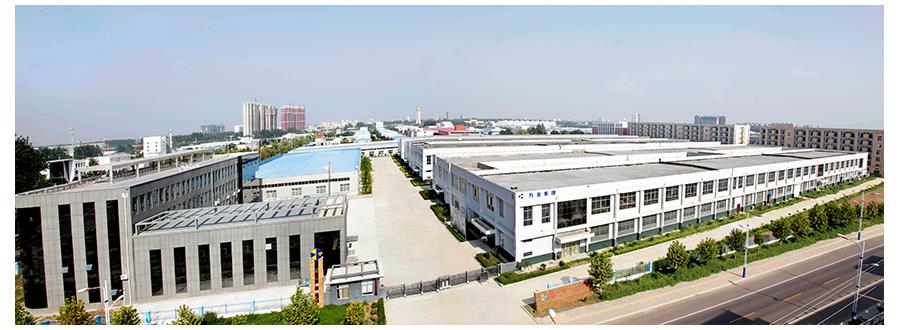Brief Introduction
Polycrystalline diamond compacts (PDCs) for cutting tools are currently being developed toward size upsizing, quality optimization, uniform performance, and diversified shape structures. The large-diameter PDC not only reduces the cost per unit area, improves the utilization rate, but also better meets the requirements for users to manufacture various types of blades.
Due to the strong product specificity and stable and reliable quality, domestic PDCs for cutting tools have a certain gap in terms of quality, specifications and varieties compared with foreign advanced levels in terms of synthesis and application due to the limitations of formulation and technology. In 2010, China independently developed and developed a PDC for 45mm cutting tools. Its performance in some varieties has reached the level of similar foreign products, which has greatly promoted PDC tool materials.
High-end applications. After continuous exploration in recent years, the product quality, market competitiveness, and market share of domestic PDCs have been greatly improved, but the gap between PDC diameters and foreign products remains large.
Recently, we used the nano-binding agent technology [1] to break through the technical bottleneck in the field and synthesized a PDC with a diameter of mm55 mm for tooling on a hexahedral press. After performance testing, it is equivalent to the performance of similar foreign products.
I conditions and processes
1.1 Experimental Equipment and Methods
In this experiment, six face presses were used to synthesize. In order to solve the problem of axial pressure loss in the sintering process, a hydraulic control system for heating and maintaining the pressure in six directions was used [2]. In order to synthesize PDC with higher quality, nano-binder technology was used, high-grade diamond powder with double peak distribution was selected, and high-temperature and high-pressure sintering was used to finally obtain PDC products with excellent properties.
1.2 Diamond size selection
The grain size of diamond has a great influence on the wear resistance and breakage resistance of PDC. The finer particle size has higher wear resistance and compressive strength, but fine-grained diamond is not easy to sinter; the coarser the diamond particle size, the better the PDC sintering performance and the stronger the ability to resist mechanical abrasion; using double peaks and multiple peaks The distributed diamond powder can effectively increase the wear resistance, heat resistance and impact resistance of the PDC and prolong the service life of the tool. Experiments show that the use of diamonds with different peak sizes in a certain proportion will increase the quality of PDC. Adding a small amount of fine-grained diamond particles to the raw material will improve the overall performance of the tool.
1.3 Carbide Material Selection
The properties of cemented carbides depend primarily on the alloy's cobalt content, WC grain size and sintering pressure, temperature and time. In general, the finer the WC particle size, the higher the hardness and the higher the compressive strength. After the hard alloy is refined, the hardness of the hard alloy is improved. The higher the hardness of the hard alloy layer, the closer to the elastic modulus and thermal expansion coefficient of the polycrystalline diamond layer, so that the polycrystalline diamond-carbide interface can be reduced. Stress: 1, reduce the probability of deformation and delamination of the composite sheet.
1.4 Assembly Block Assembly Structure
The experimental assembly block assembly structure shown in Figure I.
The pyrophyllite ring and dolomite liner are used as the heat transfer medium for the synthesis block, and the carbon tube, salt pipe, and salt film are used as the internal pressure media to ensure that the high pressure and high temperature fields of the composite composite sheet are more stable. In order to make the temperature and pressure distribution of the synthesis chamber uniform and meet the requirements of large-diameter synthetic PDC, the conductive steel ring adopts a large-diameter thin-wall structure, the core is filled with a dolomite core and a wax ring is set around the core to achieve insulation at both ends and avoid burning. Hammer; Shaped electrical conductors are made of materials with higher resistivity. By changing their shape and size, the temperature gradient of the synthesis chamber is reduced; tubes and pieces in the carbon tube are suppressed by white salt materials, and the salt is used for high temperature expansion and flow characteristics. Reduce the pressure gradient in the synthesis chamber.
1.5 Selection of Synthetic Sintering Process
The sintering process curve adopts one step-up, one-time heating and final slow cooling process scheme. The sintering process P-curve is shown in Figure 2. According to the PDC polycrystalline compact size and T. arts requirements, the sintering process parameters are designed as follows: synthesis pressure 5-6 GPa, sintering temperature 1450-1550 V, holding time 20-25 min.
1.6 Sample preparation
The high-grade diamond powder with 10 Pm+2 double-peak distribution, nano-binder and cemented carbide are used as raw materials, and the assembly is assembled with two high-temperature metal cups inverted. Under vacuum conditions of 3×10 3 Pa, 850 °C Insulation for 2.5 h. Assemble the composite block assembly as shown in Figure I and use a six-surface press to synthesize 25 min at a temperature of 1500 °C and a pressure of 5.8 GPa. The sample was sintered and then ground, ground, ground and polished to a final size of 55 mm, a total thickness of 2.0 mm, and a polycrystalline diamond layer of 0.5 mm.
2 test results and analysis
2.1 Performance Test Analysis
From the appearance inspection and grinding and throwing T: random samples of qualified PDC
Five PDC samples were taken, centered about 1/2 of the PDC radius, and the diameter of the PDC was diameter. The circles were tested by wire-cut or laser cutting. Mark the edge of the test circle and the position of the center point to be measured (Figure 3). According to the industry standard JB/T3235-2013, use the homemade wear ratio tester to perform the normal temperature and high temperature wear on the edge and center points of the test circle. Than test. The test results are shown in Table I.
From Table I, it can be seen that the ratio of the normal temperature wear ratio and the high temperature wear ratio of the sample is relatively reduced from the edge point to the center point. At room temperature, the wear rate is 6.59% lower than the center point relative to the center point. The high temperature wear is 6.78% lower than the center point relative to the center point. This is due to the non-uniform radial temperature and pressure, but the sample center point and edge point. The decrease in wear ratio is not significant, indicating that the wear resistance of the sample is relatively uniform.
2.2 Microstructure Analysis
FIG. 4 is a SEM photograph of a microstructure of a sample structure. The white area in FIG. 4 indicates the binder, and the black area indicates diamond particles. It can be seen from FIG. 4 that the diamond particles are arranged closely, fine-grained diamond is filled in the gaps between the coarse particles, the diamond particle size ratio is appropriate, and a dense and dense tissue structure is formed by DI. The microstructure is uniform and cross-like. distributed.
2.3 Ultrasound micro imaging analysis
2.3.1 Ultrasonic Nondestructive Testing
Figure 5 shows several common tissue defects in PDC products. Ultrasonic inspection of the PDC was performed using a US SONIX ultrasonic scanning microscope. The samples were examined by ultrasonics on a piece-by-piece basis. There was no occurrence of cracks, delaminations, and inclusions as indicated in Box 5 in batches.
2.3.2 Diamond Layer Uniformity Inspection
Because there are differences in the coefficient of linear expansion and the elastic modulus between the two materials of diamond layer and cemented carbide, when the diamond layer/hard alloy composite is cooled and pressure-relief after sintering, the cemented carbide has more shrinkage. The diamond layer protrudes. After grinding, the edge of the diamond layer is often thicker than the center. The uniformity of the thickness of the diamond layer is an important indicator of the product, usually the diamond layer thickness tolerance is 0.1 mm in the soil. Thickness uniformity can be scanned with ultrasound and displayed in shades of color.
Fig. 6 is a graph showing the thickness distribution of diamond layer obtained by using a SONIX ultrasonic scanning microscope. It can be seen from the left circular surround in Figure 6 that only the depths are two colors, and the dark color in the center corresponds to the thickness of the right color strip in the range of 0.4 to 0.5 mm, and the light color in the edge corresponds to the thickness of the right color strip. The range is 0.5 ~ 0.6 mm, and the thickness dimension meets the requirement of 0.5 ± 0.1 mm thickness of diamond layer. From the dark and light distribution of the color on the left side of the cube, it can be seen that the center dark area accounts for the majority, indicating that the uniformity of the diamond layer thickness is better.
2.4 Cutting test
Two PDC blank samples and two foreign PDC blanks of the same type were used to produce the standard cutting insert shape shown in Figure I. The tip arc was 0.4 mm. The inserts were clamped on the MCLNL2525M16W holder and the cutting test was performed on a NEXUS200-II L CNC lathe. Test cutting speed 50 m/min, cutting depth 0.1 mm, feed rate 0.05 rmn/r, dry cutting. This test considers the cutting conditions mainly based on tool wear. The cutting sample material used is YG8 cemented carbide, hardness HRA89. The shape and dimensions of the cut spherical sample are shown in Figure 8.
The service life of the blade is determined based on the dimensional accuracy of the cut spherical sample, surface roughness, and wear of the blade. The blade life was judged as the back face wear amount VB = 0.25 mm, ie the blade failure was judged when the back knife wear amount reached 0.25 mm. Record the maximum number of hard alloy spheres per insert; observe the wear profile of the blade surface with a three-axis fully automatic 3D optical image metrology instrument and measure the flank wear of the insert.
the amount. The test data is shown in Table 2. From the test results, the service life of the test blade is the same as that of foreign similar blades.
3 Conclusion
(I) The samples were tested for performance and the wear ratio was over 230,000. Under the condition of 700 X: heat preservation for 2 min, the sample has good thermal stability, and the normal temperature wear ratio and high temperature wear ratio are 6.59% and 6.78% lower than the average edge of the center point, respectively, which indicates the wear resistance of the sample. Uniform.
(2) The sample was analyzed by ultrasonic micro-imaging without defects such as batch delamination, cracks, pores, inclusions, and uneven diamond thickness. (3) When the tool is made of a sample and the hard alloy is cut, the service life, back face wear, and other indicators are equivalent to those of similar foreign products.
Related Products













